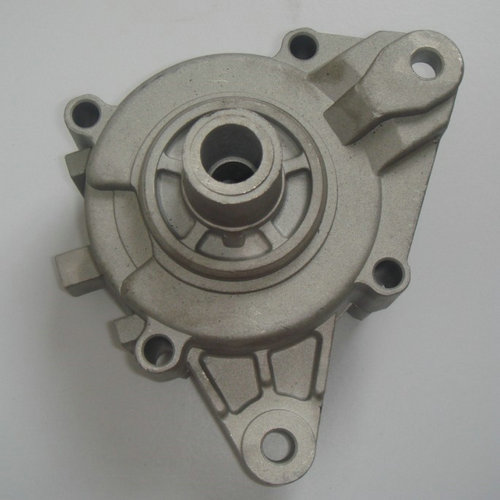When talking about the functionality and feasibility of zero draft angles, many people get things wrong. The die casting process can also involve designing a metal material without creating a draft on platforms. These structures in most cases will be removed from the local molding structure without any stress. The concept of zero draft angles often helps to achieve tight and closer tolerances. Using the concept is also important for fitting and assembling items with the right specification.
Die casting is now the hope many industry professionals looking to achieve a zero draft angle without experiencing any stress. Remember that the concept can also help to add more features to the end product you have designed. While many can see it as an impossible venture, it’s always easy to use casting in producing a reliable zero draft angle. The main problem people are having is that can this concept helps in getting the best closer tolerance.

Aluminum die casting compressor cylinder parts*
Reason For The Zero Draft Angle:
The theoretical concept of the zero draft angle can help you get closer tolerance results. Another thing to know about the zero draft angle concept that it transforms the features of a product. It implies that the final product can also see some changes when there is the introduction of the zero draft angle concept. There will be more regulation of the entire system when you don’t put the zero draft into the casting container. With this mind, having total control over the accuracy of the design is the task of the producer. In a simple language, a zero draft angle will help in changing the properties of any product in production.
The Easy Way To Get Closer Tolerances In Die Casting:
There is every possibility to cast materials when using a zero draft angle. Sometimes, people can achieve this result without using Dynacast. Using a draft angle and zinc die casting materials, it’s possible to get ±0.02mm tolerances. It implies that accuracy and consistency are the products of using the zero draft angle concept well. During the casting process, you’ll get several results with the same value. It also indicates that you’re in the right direction for your production process. One confusing thing about this concept is that many people have different views on the closeness of tolerances.
When the height of quality results is above or meets the industry standard, then the concept remains satiable. It helps designers around the globe to produce, precise and quality product features in the end. The form of the item plays a big role when observing for closer tolerances. The item in usage has to give a closer feature and result in the guideline of the equipment used. If you’re looking for closer and functional tolerances, it may be less important to use the zero draft angle concept.
Draft Angles – What Are Their Functionalities?
When talking about machine parts or 3D prints, there may not be more emphasis on the ejection process. Nevertheless, die casting also focuses on the removal of unwanted parts from the production process. It helps to preserve the casting container and equipment used in the production process. With draft angles by the cores and sides of the container, the removal of waste parts becomes easy. Draft angles are mainly in the casting system to minimize the friction or traction between parts. Sometimes these angles can be stuck, dented, and stripped in the container. The truth is that a draft angle can help a lot in the production of designs, parts, and products. The most crucial thing to know about these angles is that they have the capacity to remove unwanted parts of the die casting system.
How To Get A Zero Draft Angle Easily In Die Casting?
Under some conditions, it’s possible to get a zero draft angle by using a plethora of zinc die casting materials. The most crucial thing to know is that zinc must be used in casting the container. It’s because zinc has wonderful physical and shrinkage features that can help the process work well. The shrinkage rate of zinc is around 0.7% and can be recovered when using a reliable tool. Another thing to know about zinc is that it produces smooth results. If you want to achieve a zero draft angle without stress, it’s ideal to use zinc for the design of your casting container. Remember that removing zinc from the entire casting system is easier than metals like aluminum. The truth is that people that still engage in the act of casting without using a draft angle can still get better results.
Reference
*Image from https://www.rallymachining.com/
